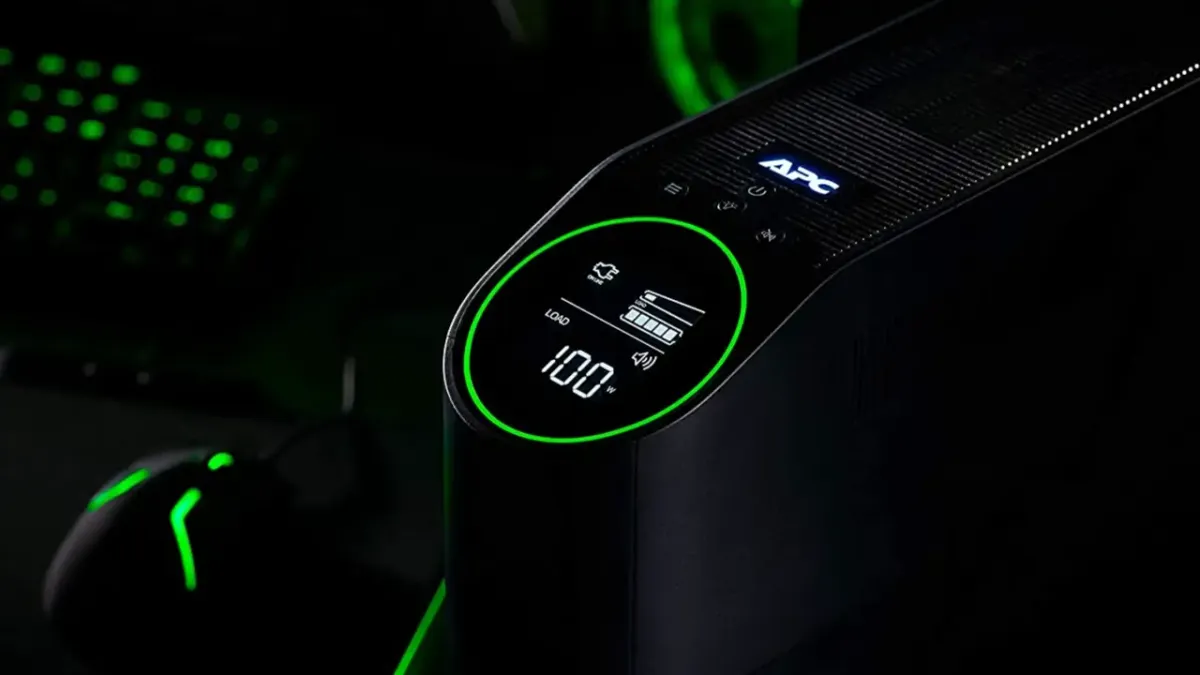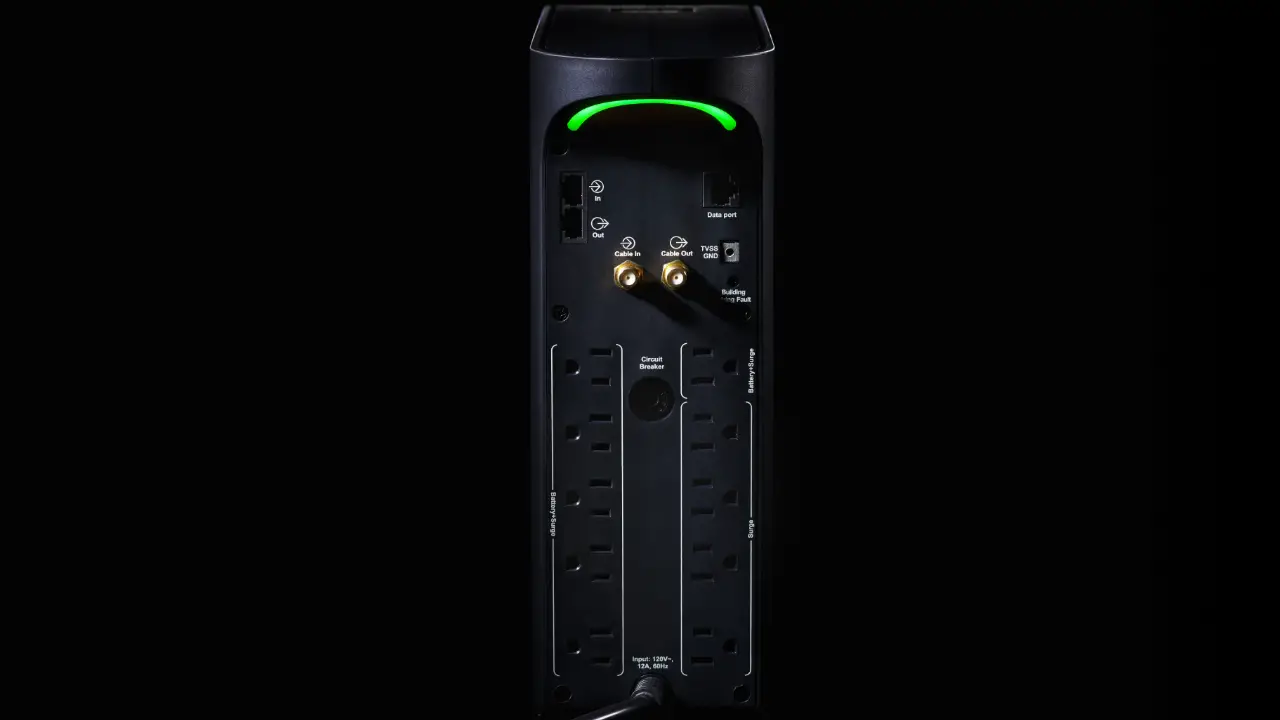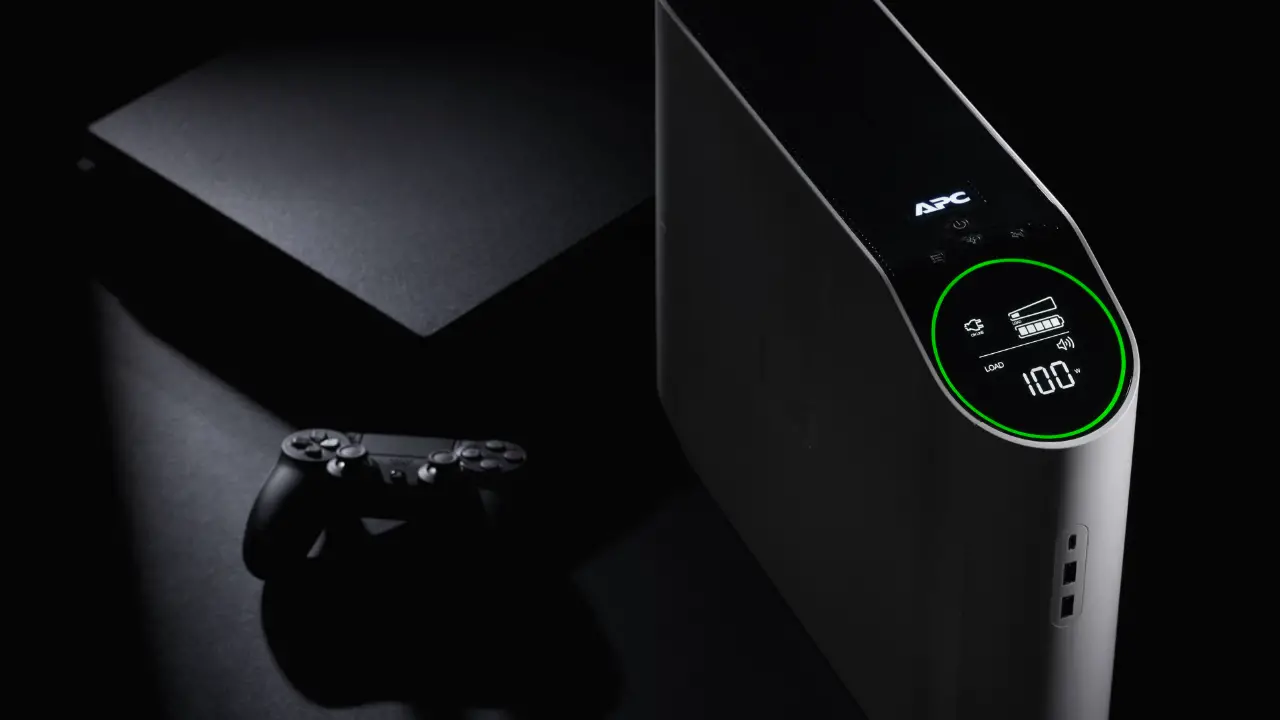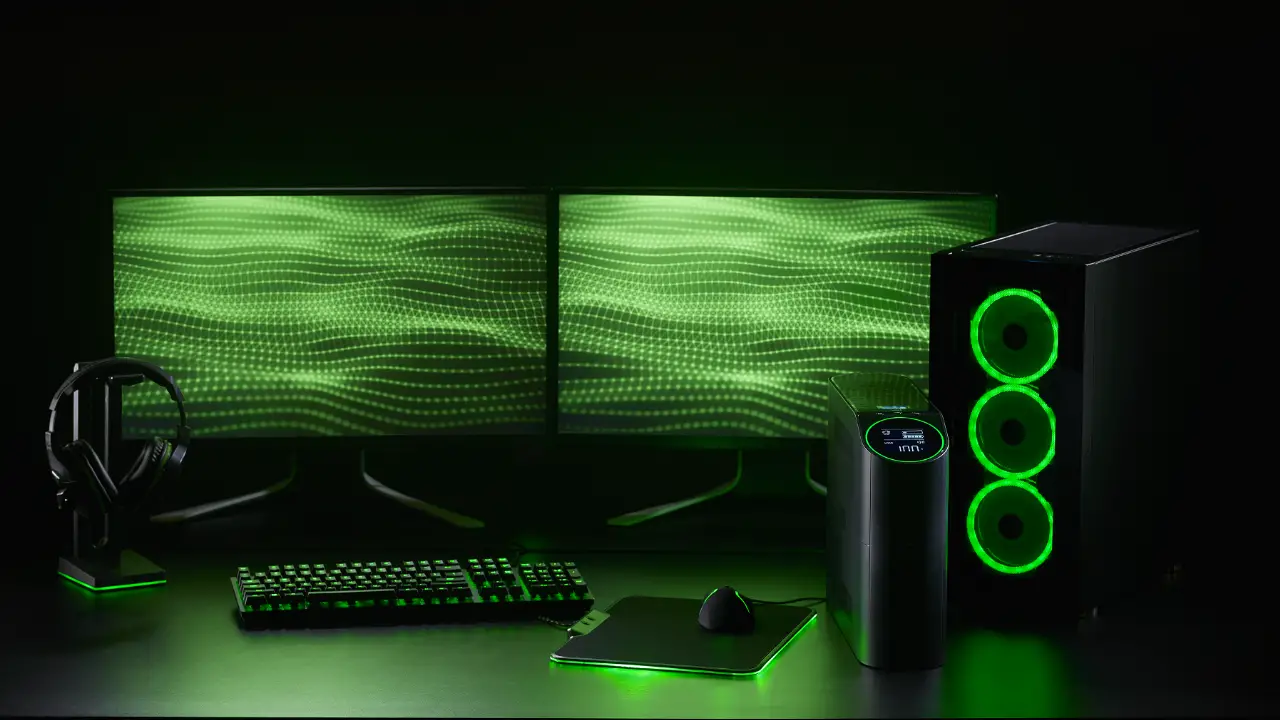
Were you one of the lucky ones this holiday season? Did you manage to snap up a PlayStation 5, Xbox Series X, or maybe even build a brand new PC with a 3000-series video card? Now imagine how upset you’d be if you had to replace any of those things. If it’s even possible to get another one, none of them are cheap. If you are like me and live in a state like Texas with terrible power problems, then having some way to protect your devices is a must. APC isn’t new to the surge suppression and power protection market, but they are now stepping directly into the gaming world with a product they are calling the APC Back-UPS Pro Gaming UPS. Let’s unbox it and power it up.
Before you can use the device, you’ll need to open it up and connect the battery. The hot power lead has to be connected, which can throw a spark as the connection is made, so bear that in mind before you get started. Thankfully, the ground is already wired in, so even with a little spark it’s safe – you’ll be fine.
After charging it overnight, the first thing I noticed after powering it up is easily my favorite feature – lighting. It’s odd to say, but having spent plenty of time awkwardly reaching behind my entertainment center, fumbling to plug in a new device, I have a deep appreciation for the simple LED lights on the Pro Gaming UPS. There is a large ring light on the front, as well as a U-shaped LED on the rear that illuminates the power ports, both of which come in very handy when you’ve got the device tucked away. Naturally, this is a “Gaming” focused device, so APC threw a half-dozen RGB light choices onto the device that you can cycle through to match whatever aesthetic you’ve chosen for your gear.
The RGB lights on the Pro Gaming UPS also serve as visual indicators in the case of a fault. When you lose commercial power, the RGB lights will show a visual countdown of sorts – green means you have more than 51% of the battery power left, yellow means you are in the 21 to 50% band, red puts you in the 20 to 6% area, and flashing red means you are down to just 5%. There is also a screen inside the RGB circle that has all manner of information in it, but we’ll get to that later.
On the rear of the device are ten power connections – six of them are connected to the battery for backup purposes, and the remaining four are not. All ten of them have full surge suppression and line conditioning, meaning they enjoy the full benefits of protection, albeit without the battery backup.
If you subscribe to anything like the Newegg newsletter, it seems companies like Cyberpower are constantly offering up 1000W UPS units on sale every other week. It’d be easy to think you should just grab one of those and you’ll be all set, right? Well, maybe. I look at the power draw of the combined devices in my entertainment center and frankly it’s a little tight. My Denon surround sound system chews up around 170W for the first channel, and then about 70W per channel after that for a total of 660W before I add my subwoofer. The TV adds another 80W, and that’s before we connect a single console. The PlayStation 5 has a max draw rating of around 350W, the Xbox One X (bafflingly) is only 175W, and the Nintendo Switch barely moves the needle at a maximum of 20W. Consoles draw the most power on boot, so if you powered all of them up simultaneously you could theoretically hit 1285W. Realistically that isn’t going to happen, but now let’s add in a powerful PC. Before we do, however, we need to talk about power conditioning.
Before we get further into this, I want to explain what a sine wave is, how it relates to power, and why it’s important. When power comes from the commercial carrier, your power company, it’s a smooth up and down sine wave. Pushing it through most UPS units, the device will use the battery as a sort of “buffer” to approximate the same sine wave using step-up and step-down techniques. This stepped-approximated sine wave looks more like a set of stairs, hence the name. Speaking from experience, two of my monitors are perfectly fine with a stepped-approximated sine, where my third absolutely hates it, causing it to flicker or simply not work at all. The solution to this is something called APFC, or Active Power Factor Correction. If you are selecting a UPS for your setup, and it doesn’t have APFC, you are going to have a bad time. Thankfully, this device is fully APFC compliant, meaning it provides a smooth sine wave of power to your devices, regardless of whether it’s passing through commercial power, or running off a battery. Now that we know the power wave is clean, let’s talk about capacities and draw.
The PC I built draws a staggering 850W at maximum. I know this because it simply wouldn’t boot when I put in a 750W. Sure, the draw at idle is significantly less, but on boot you can see that it can easily tip the scales. None of the devices I’ve mentioned are likely to be running at full power at the same time, but combined you can see how they could exceed 1000W at any given moment. As such, I’m no longer recommending 1000W, instead suggesting that 1500W is the new standard. It should go without saying, but bear in mind that every device you plug in reduces the overall battery time you have in the case of a power outage. That said, even if you aren’t using that much wattage, the extra battery power and capacity to absorb will only benefit you.
On the back of the Pro Gaming UPS you’ll also find two coaxial ports, two Ethernet ports, a data port, and a ground screw. The coaxial ports are to help keep your cable modem safe as that coax cable does carry a charge and can backfeed into other devices. These ports will help isolate this to ensure that doesn’t happen. Similarly, the pair of RJ-45 Gigabit ports will keep your hardline connections safe — just another layer of protection. The ground is how you’ll connect multiple UPS devices together, allowing them to carry a common ground, or you can wire it to an actual grounding rod, though that feels like overkill.
The data port on the Pro Gaming UPS ties directly into the APC PowerChute software. PowerChute is software that can tell your PC when to shut down in the case of a power event. Since those don’t always happen when you are in front of your PC, PowerChute can run through a series of events, shutting down applications, saving work, and otherwise preparing your system to power down safely. It’s optional, but I cannot imagine running without it. It’s another piece of mind that you don’t realize you need until you use it.
I was surprised to see three more ports on the front of the Pro Gaming UPS – two USB-A, and one USB-C. I have several devices that I routinely charge that are juiced up via USB, and now I can leave those plugged in without fear of them getting zapped in the case of a power event. I’d be pretty bent if I couldn’t use my Razer Anzu glasses to take calls while I work anymore – now I know they’ll be safe while they recharge.
For this device to be effective, you’ll have to be mindful of what you plug into it. If you are online and want to “finish the fight”, you’ll need to ensure you have everything connected to do exactly that. That means your console or PC, your display, possibly your audio if that’s critical, and most importantly, your cable or fiber modem. If you don’t plug in the device that lets you connect to the Internet, you’ll be knocked offline immediately anyway. In a single player game that’s a non-issue, but if it’s a Halo match it’s going to be a different story.
If the unforeseen does occur (and in Texas it does often enough where it’s hard to even call it unforeseen – no joke, I heard my UPS click for a momentary power wobble as I typed this sentence!) you’ll appreciate a few features on the Pro Gaming UPS. First, it has a 15 amp breaker in the back that’s easy to reach. It’s in the middle of a lot of wires, but if you are using cable extenders (and I do recommend them – here’s an easy link for you), it’s easy to reach. This makes resetting the unit easy, though at 15A I don’t see that overload condition occurring that often.
The second feature you’ll probably appreciate is just how long the device will run. We tested a full charge to fully dead three times. At half load, which is where I imagine a lot of folks will live, we saw a runtime of roughly 12 to 13 minutes – more than enough time to casually finish most activities, save, and safely power down. We also tested the device at an extraordinarily low power draw with just a TV, an Xbox One X, and a power bar – essentially your dorm setup. We saw the device hold out for nearly 40 minutes! At that point you could probably finish the back half of a movie before you had to shut down. On the opposite end of that spectrum is a fully-loaded UPS. I’m talking about running a high-end PC, multiple monitors, a Plex NAS, a console, etc. all at the same time. With the device fully loaded, you’ll have around 3 minutes to power everything down. It’s not much time, but when you’ve got this much gear running off it, it’s enough to get all of it turned off safely.
On the face of the device, tilted to 160 degrees for ease of viewing on a desk or on the floor, is a large screen residing inside the LED ring. This has all of the information you’ll need to keep an eye on the Pro Gaming UPS, including how much load the device is currently carrying, how many minutes of power backup at that current load, if the device is set to chime in the case of an emergency or not, and whether it’s running off of commercial power or from its battery. Toggling through the options, you’ll also find self-test functions, shutdown, and other basic functions. It’s a battery backup, not a rocket launch, so it’s about what you’d expect, and it does the job.
There really is only one feature of the APC Back-UPS Pro Gaming UPS that gives me pause – it has a 3 year warranty, which is fairly standard for any lead-core acid battery UPS, but it only carries an Equipment Protection Plan (EPP) for up to $150,000. I’ve worked with APC and Schneider-Electric for decades on the commercial side, so I’m 100% confident that they will absolutely honor that warranty, but to see it come in at half the coverage of a competing product is a bit of a surprise. It’s very unlikely that you’ll ever use this damage coverage, but it’s good to know up front if you might want to contact your insurance for supplemental damage coverage or a secondary policy from a company like SquareTrade.
How much will all of this peace of mind and protection cost you? Well, that’s the other thing that might give you pause. Available in white or black, the device is going to set you back $259.99. APC sells other non-gaming focused 1500VA products for about $40-50 cheaper that lacks the RGB and lighting aesthetics, so let’s be clear you are paying a little bit of a premium to match your other gear. Given the pictures of people’s custom controllers and eye-blasting RGB PC setups, it seems like a small price for a bit of matching protection.
APC Back-UPS Pro Gaming UPS
Excellent
With excellent protection and gorgeous aesthetics, the APC Back-UPS Pro Gaming UPS is ready to keep your precious consoles, PC, and home theater safe, no matter what. And now, it’ll look good doing it!
Pros
- RGB lights are form AND function
- APFC compliant power
- Plenty of ports and protection
- Solid battery life
- Cooling and venting functions are quiet
Cons
- Pricey
- EPP feels light compared to others




